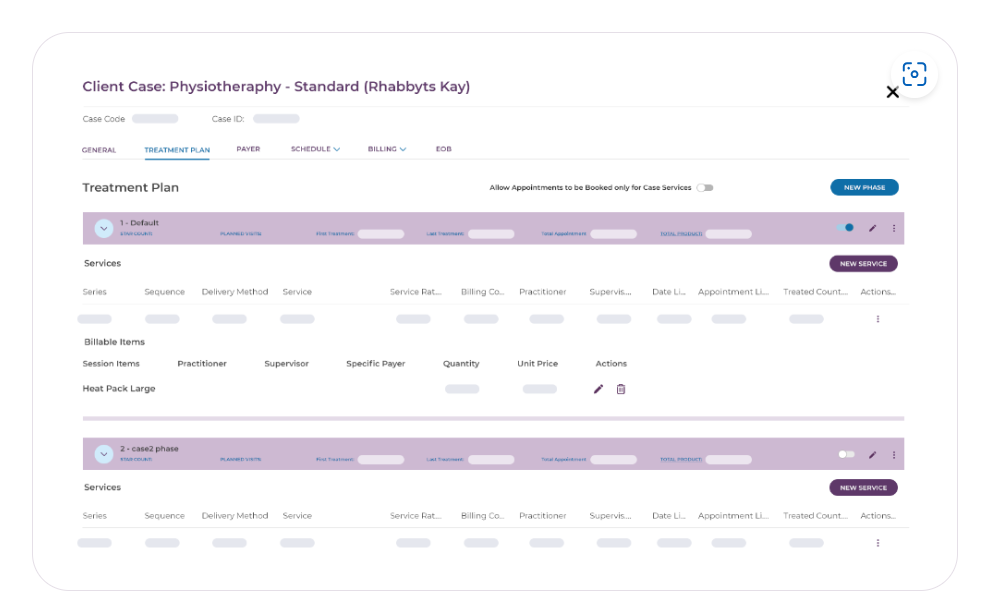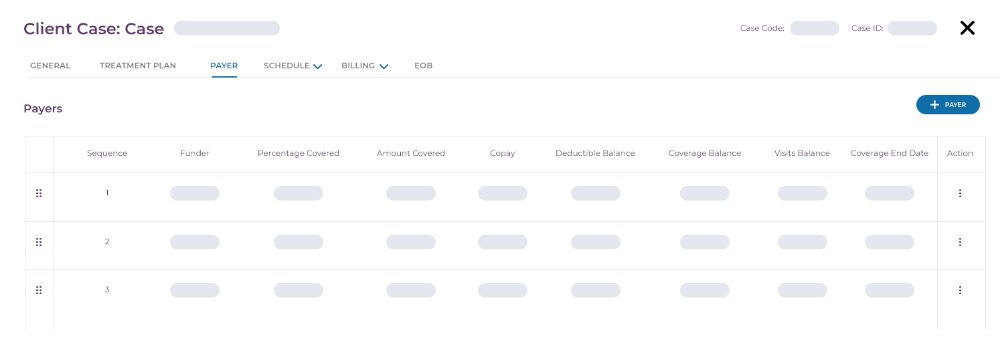



Experience the Heart of Clinicmaster's Power
Experience the full potential of Clinicmaster with our array of user-focused core features. Elevate your practice management to new heights as you streamline tasks, optimize patient care, and boost efficiency. Explore a range of benefits designed to enhance your user experience and transform the way you run your healthcare facility.
Save time and streamline clinic operations with Clinicmaster's unique case-based patient management approach. Keep track of injuries, appointments, treatments, insurance information, payments, phases, and more.


Consolidate comprehensive patient information within each case for a holistic view. Track demographic information, contact details, injury history, and medical background to tailor treatments and optimize care

Track demographic and contact information.

Record date and time of injury, mechanism, and location.

Monitor previous injuries and medical history.


Implement personalized treatment plans with structured protocols for each patient's unique needs. Clearly define goals, milestones, and measurable objectives. Share the plan of care with patients for collaborative healthcare.

Outline the expected duration, key milestones, and follow-up appointments in a timeline.

Describe specific treatment modalities.

Define short-term and long-term goals.

Set measurable objectives to track progress and success.

Share the plan of care with the patient.



Seamlessly track funding information within each case. Gain visibility on coverage, co-payments, deductibles, and integrate claim submission with organizations for a streamlined administrative process.

Access information about covered services, exclusions, limitations, and EOB.

Track coverage, co-payment, deductibles, and coverage limits.

Gain visibility on multiple insurance plans and how benefits are coordinated.

Integrate claim submission with various organizations.



Monitor and assess patient progress with recorded vital signs, pain intensity, and direct patient feedback. Use graphs and charts for a visual representation of changes over time, providing valuable insights for personalized interventions.

Regularly record and track vital signs.

Assess pain intensity and frequency, as well as the effectiveness of pain management interventions.

Incorporate systems for patients to directly report experiences and perceptions of their health.

Record and monitor progress toward specific treatment goals and objectives.

Incorporate surveys or questionnaires to gather feedback on the patient's satisfaction.

Use graphs or charts for a visual representation of changes in key metrics over time.


Consolidate comprehensive patient information within each case for a holistic view. Track demographic information, contact details, injury history, and medical background to tailor treatments and optimize care

Track demographic and contact information.

Record date and time of injury, mechanism, and location.

Monitor previous injuries and medical history.


Implement personalized treatment plans with structured protocols for each patient's unique needs. Clearly define goals, milestones, and measurable objectives. Share the plan of care with patients for collaborative healthcare.

Outline the expected duration, key milestones, and follow-up appointments in a timeline.

Describe specific treatment modalities.

Define short-term and long-term goals.

Set measurable objectives to track progress and success.

Share the plan of care with the patient.



Seamlessly track funding information within each case. Gain visibility on coverage, co-payments, deductibles, and integrate claim submission with organizations for a streamlined administrative process.

Access information about covered services, exclusions, limitations, and EOB.

Track coverage, co-payment, deductibles, and coverage limits.

Gain visibility on multiple insurance plans and how benefits are coordinated.

Integrate claim submission with various organizations.



Monitor and assess patient progress with recorded vital signs, pain intensity, and direct patient feedback. Use graphs and charts for a visual representation of changes over time, providing valuable insights for personalized interventions.

Regularly record and track vital signs.

Assess pain intensity and frequency, as well as the effectiveness of pain management interventions.

Incorporate systems for patients to directly report experiences and perceptions of their health.

Record and monitor progress toward specific treatment goals and objectives.

Incorporate surveys or questionnaires to gather feedback on the patient's satisfaction.

Use graphs or charts for a visual representation of changes in key metrics over time.